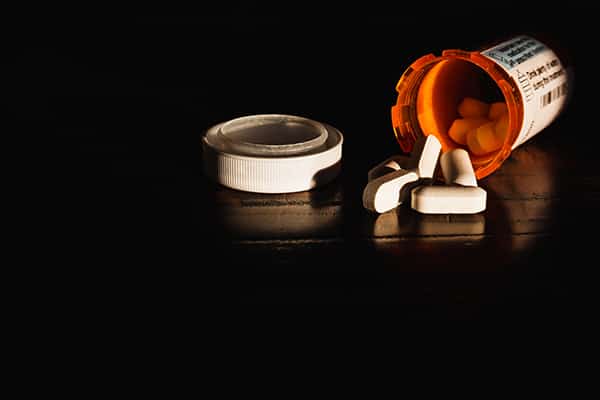While police officers are often dispatched alongside other first responders when drug overdoses are reported, an analysis of hundreds of overdose events in one Rhode Island city found that there were scant incidents that actually needed involvement from law enforcement.
“It was surprising and promising to find that arrests only occurred in about 1% of all cases of overdoses attended by police,” said Alexandria Macmadu, study co-author and a postdoctoral research associate in the Department of Epidemiology at Brown University’s School of Public Health. “The research shows that there were few situations that truly required law enforcement presence due to safety concerns.”
The first responders who are dispatched to an overdose incident often include police, fire rescue personnel and emergency medical services, Macmadu said. In recent years, there has been an increase in the number of overdose response and prevention trainings for police, and officers are now often equipped with naloxone, a medicine that can rapidly reverse an opioid overdose.
However, limited research has documented the role of police in responding to overdose events. The nature of their role is important, Macmadu said, because police presence may have unintended harmful effects on people in an overdose situation.
“We know from decades of research, both in Rhode Island and across the country, that fear of police involvement and arrest for things like drug possession can strongly deter people who use drugs from calling 911 when an overdose happens,” Macmadu said. “Because every minute matters during an overdose, this delay in seeking help can cost lives.”
The researchers wanted to understand what happens when police arrive on scene to an overdose, especially how often arrests are made and how often reports describe people experiencing overdoses as combative.
“Research has told us that some police attending an overdose see their role as protecting other first responders from people who use drugs who become combative after being revived from an overdose,” Macmadu said. “So we wanted to understand how often this combativeness is actually encountered by police.”
Understanding the actions of police at overdose events is also critical from a racial justice lens, Macmadu said, as people of color are disproportionately impacted by police surveillance, non-violent drug-related arrests and drug-related offenses across the U.S.
In collaboration with Project Weber/RENEW, a nonprofit that provides peer-led harm reduction and recovery support services for people who engage in drug use or sex work, the Brown-led research team accessed the data through a public records request, and Macmadu developed the methodological and research frameworks to answer the research questions. The analysis, which was published in the Harm Reduction Journal, reviewed 200 overdose events during one year in an unnamed Rhode Island city between September 1, 2019, and August 31, 2020.
The researchers found that police administered naloxone in approximately 10% of incidents. In most incidents, police were the last group of first responders to arrive on scene (59%), and most often, naloxone was administered by others (65%). Police were significantly more likely to administer naloxone when they were the first professionals to arrive, when naloxone had not been administered by others, and when the overdose occurred in public or in a vehicle. Arrests at overdose events were rarely reported (1%), and people who overdosed were rarely (1%) documented in incident reports as being combative.
“Municipalities often exceptionalize the response to overdoses compared to other medical emergencies by co-dispatching police and EMS,” said Annajane Yolken, study co-author director of strategy at Project Weber/RENEW. “The research highlights that most often overdoses in the community are handled effectively by emergency medical services, who most often show up first on scene and are the first to administer naloxone.”
The researchers recommended that considering the findings, all jurisdictions should ideally have sufficient first-responder staffing and resources to ensure a rapid response to overdoses, with police rarely or never being dispatched to respond to standard overdose incidents. Until that ideal can be achieved, they added, any available responders should be dispatched at the same time as the police, with police instructed to resume their patrol once other professional responders also arrive on the scene.
Macmadu also made the point that warrant searches of people at the scene of an overdose should be prohibited, since these those searches discourage people from calling 911 for medical emergencies.
The results make the case for a new, and potentially more effective, approach to overdoses, Macmadu said.
“We think that this research presents municipalities with an opportunity to reframe the thinking about a reliance on a dual response to overdoses by both EMS and police, when it appears that the police presence not only might be unnecessary, but also might have a negative impact on the person who has overdosed and others who are on scene,” Macmadu said.
Additional collaborators include Alexandra B. Collins, Brendan P. Jacka, Brandon D. L. Marshall, Roxxanne Newman and Jai’el R. Toussaint from Brown; Lisa Frueh from the Harvard T.H. Chan School of Public Health.
This work was supported by the National Institute on Drug Abuse and the COBRE on Opioids & Overdose with funding from National Institute of General Medical Sciences of the NIH.


